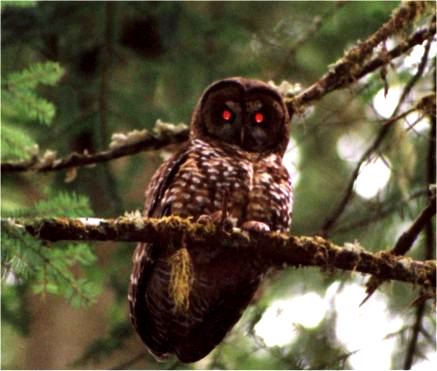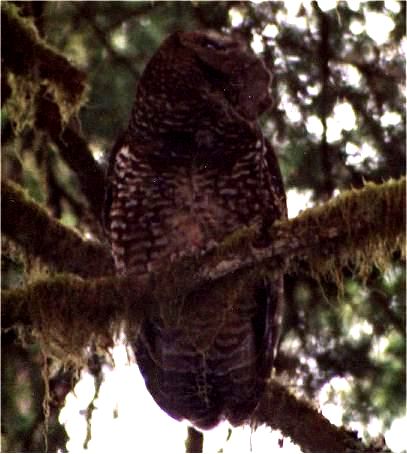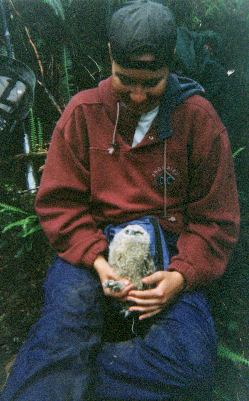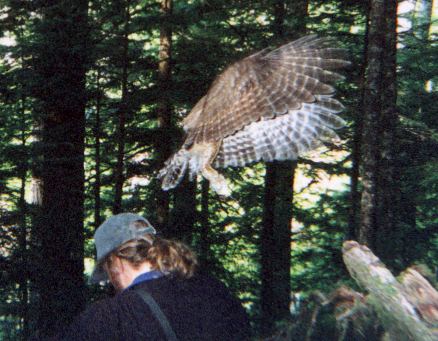
This is Kurt, my work partner, standing in front of a nice Spruce tree we ran across.

This is one of our nesting females in 2001. We never did find her mate, and it seems he may not have been around. Perhaps that is why her young were small, and at least one did not survive.

And another of the same female.

This is the above female, with a mouse in her mouth, looking to take off and deliver it to her young.

Here she is again, about to take a nap. Note the dead mouse on the branch. She was full apparently.

This is a picture of the mean biologist banding her kid.
(I know,. . .Iím so fashionable as a biologist!)
On to a completely different site, that proved to be a completely different story.

This is the male. Spotted Owls do not show a lot of sexual dimorphism (meaning, males and females are similar). Size gives us some clue (males are smaller), but it is usually the pitch of their hoot that makes it clear. This site had to be visited enough times that we could tell the owls by sight as well.
He is an aggressive owl, meaning that he keys in on you as soon as you arrive and flyís in to meet you, waiting for mice. I have more than one talon knick from him, as I can barely get the mice from my pack before heís trying to take them from me. We try not to give them more mice than is needed, so they arenít habituated, but that doesnít always work.
Of course, being aggressive means youíre around enough to get your picture taken,. . . .

a lot.
(This is one of many photos on this page taken by Kurt, not me)

Spotted Owls are quite curious (which is not to be said of all owls). Hence, if youíre taking their picture, and you move around the tree,. . . .they look for you.

Note the mouse in the maleís talons.

I believe this is the final picture of this male.

Here we (Jim & I) are banding the female of this pair.

This is one of their juveniles, pouting after just being banded. Notice that the plummage and color are more advanced than in the previous nest. The second juvenile did not cooperate, and avail itself to being captured, which is why we returned to this site so many times.

This is the one shot that I canít quite pin down,. . . . .needless to say,. . .itís a nice picture of a spotted owl.
Back to my Owl page.